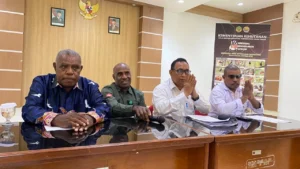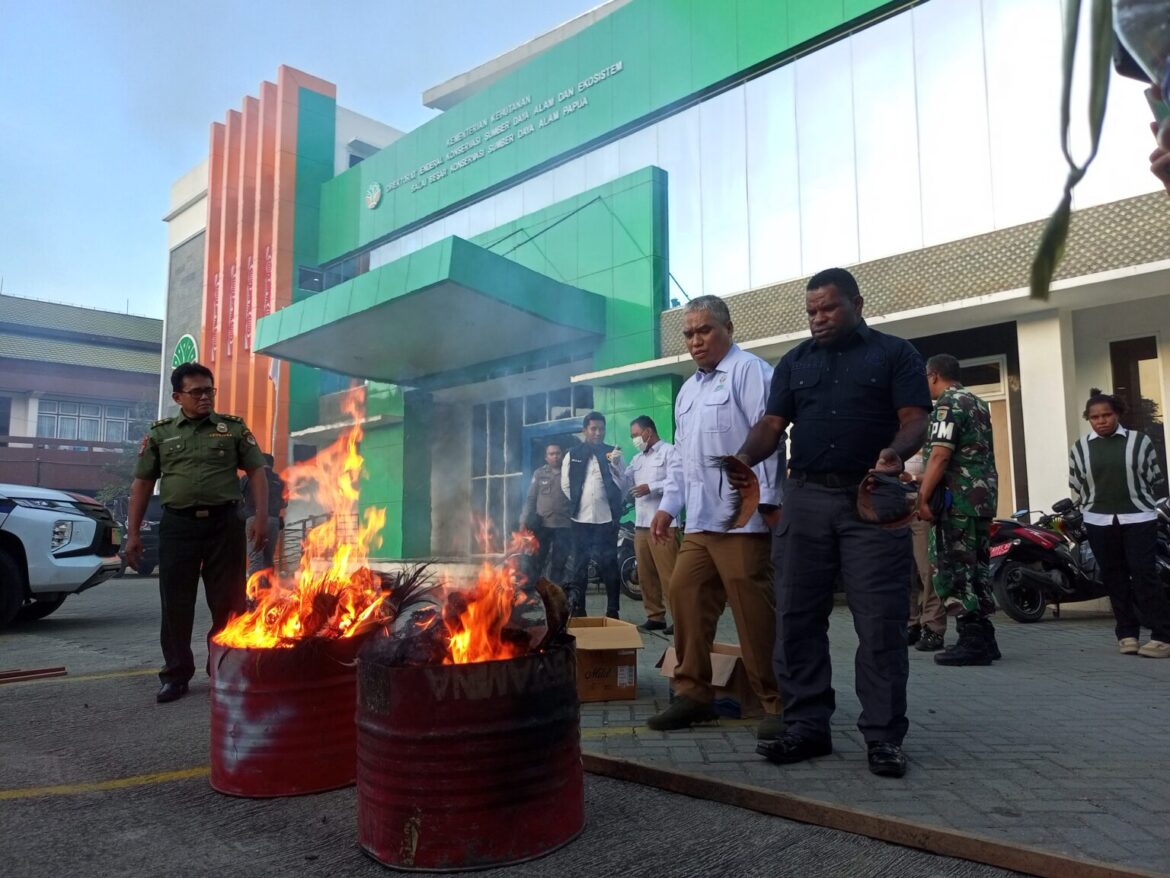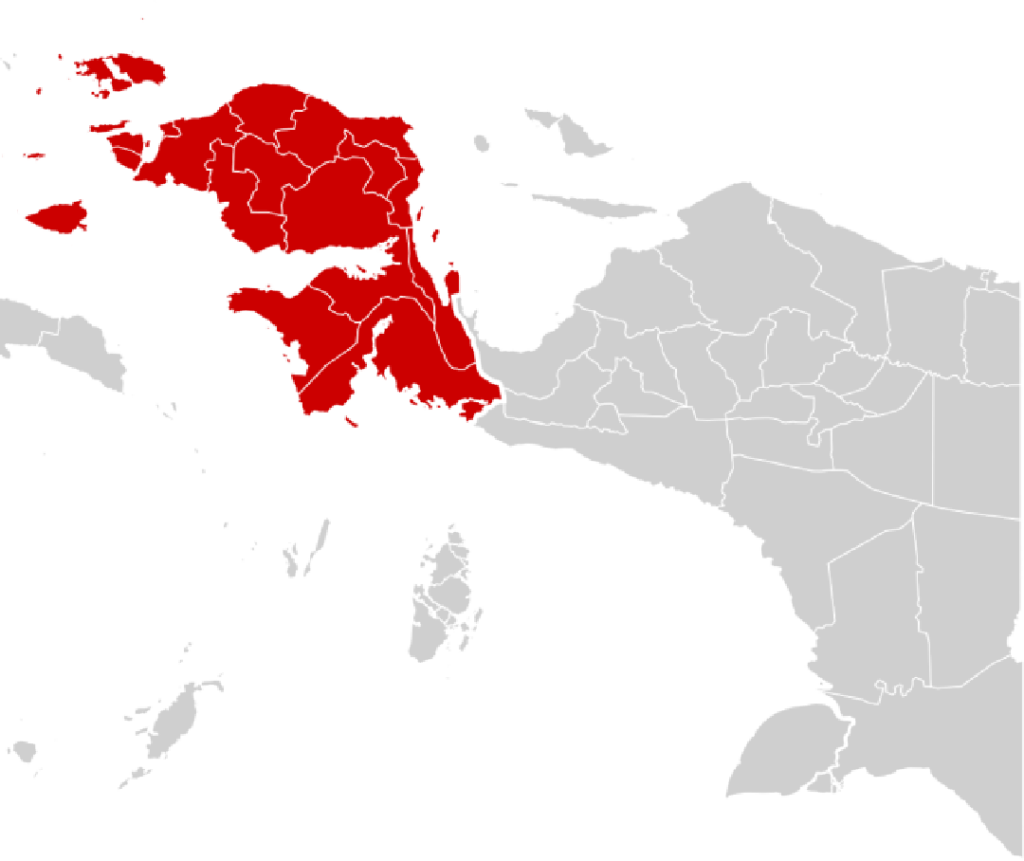In the lush green heart of Papua, where the mist rolls across mountain ridges and forests shimmer with birdsong, an act of law enforcement unexpectedly ignited a national conversation. On an otherwise quiet day on October 15, 2025, officers from the Balai Besar Konservasi Sumber Daya Alam (Center for Natural Resources Conservation, or BBKSDA) Papua, Indonesia’s regional conservation authority, carried out the destruction of a ceremonial crown adorned with feathers of the Cenderawasih, or bird of paradise—a species so beautiful it has become both a national treasure and a global conservation icon.
The operation, part of a broader crackdown on illegal wildlife trade, was routine from a legal perspective. Yet when images of the burning accessory surfaced on social media, they triggered an emotional wave. Some critics accused the government of disrespecting Papua’s cultural symbols. The Free Papua Movement (OPM) and its sympathizers even tried to weaponize the footage as online propaganda, claiming the act insulted indigenous traditions.
But for those who looked deeper, the reality was far more complex—and noble. According to BBKSDA Papua, the destruction of the accessory was carried out at the owner’s own request, in accordance with existing wildlife protection laws, and as a deliberate move to break the chain of illegal wildlife trafficking that threatens not only the bird of paradise but also Papua’s ecological integrity.
In truth, this was not an attack on culture. It was an act of protection—for nature, for law, and for future generations of Papuans.
The Bird of Paradise: Beauty, Culture, and Survival
The Cenderawasih is often called the “Bird of God,” a creature of myth and majesty that has fascinated naturalists for centuries. Its dazzling plumage—a cascade of gold, crimson, and emerald—has graced countless Papuan ceremonies, tribal dances, and family heirlooms. For indigenous communities, wearing feathers of the bird of paradise is not vanity; it is a sacred connection to ancestry, honor, and the spirit of the forest.
Yet this cultural reverence has, paradoxically, endangered the very species it celebrates. Over the past decades, illegal hunting and trade of bird of paradise parts—especially feathers and mounted trophies—have escalated, driven by collectors, tourists, and black-market demand. According to environmental authorities, dozens of birds are killed each year across Papua and Papua New Guinea, their feathers smuggled out to be sold as ornaments or souvenirs.
Under Indonesian Law No. 5 of 1990 on Conservation of Biological Resources and Ecosystems, the bird of paradise is fully protected, meaning it is illegal to hunt, capture, possess, or trade any part of the species without a permit. Violations can result in up to five years imprisonment and heavy fines. Despite this, enforcement remains a challenge in Papua’s vast and remote landscapes—where rugged terrain and limited infrastructure make patrolling difficult, and where some people still see wildlife hunting as part of customary practice.
This is where BBKSDA Papua’s action fits into the bigger picture. The destruction of the confiscated crown was not a random act—it was a symbolic assertion of Indonesia’s sovereign commitment to conservation law and its determination to end the exploitation of protected wildlife.
The Operation: Law, Ethics, and Intent
Between 15 and 17 October 2025, BBKSDA Papua, supported by local law enforcement, conducted a multi-location inspection in Jayapura City, Jayapura Regency, and Keerom. The operation targeted illegal possession and trade of protected flora and fauna. Authorities seized 58 live protected animals and 54 preserved or processed specimens, including feathers, trophies, and accessories made from endangered species.
Among the seized items was the Cenderawasih crown that would later become the center of controversy. After an internal legal review and at the explicit request of the owner, the agency decided to destroy it, citing Ministerial Regulation P.26/MENLHK/SETJEN/KUM.1/2017, which allows the destruction of confiscated wildlife products to prevent them from reentering illegal markets.
“We acted under the law, and there was no other motive,” explained Johny Santoso Silaban, the head of BBKSDA Papua, in an interview with Cepos Online and Betahita.id. “The destruction was part of our duty to stop the circulation of illegal wildlife products. It was done in good faith, not to insult anyone’s culture.”
Silaban emphasized that the crown was not a cultural heirloom but a commercially made accessory, and its destruction was a legal necessity to maintain the integrity of conservation enforcement. He also issued a formal apology to the Papuan people, acknowledging that the act—though lawful—had unintentionally hurt cultural sensitivities. “We respect the cultural and spiritual meaning of the bird of paradise. Our purpose is to protect, not to destroy, what is sacred to Papua.”
Propaganda, Public Perception, and the Search for Understanding
The incident quickly became the subject of heated discussion. On social media, footage of the burning crown was misrepresented by separatist-linked accounts as evidence of “Jakarta’s contempt” for Papuan traditions. The OPM propaganda networks framed it as an act of cultural erasure, sparking anger among uninformed viewers who were unaware of the legal and ecological background.
In reality, the situation reflected a misunderstanding between enforcement and emotion. Papua’s cultural identity is deeply intertwined with its natural environment—and any action involving its symbols, however legal, requires careful communication.
Indonesia’s central government and local conservation agencies soon moved to clarify the facts, emphasizing that the BBKSDA’s operation was guided by both law and humanity, conducted at the owner’s initiative, and in full respect for indigenous dignity. The Ministry of Environment and Forestry reiterated its commitment to balancing cultural preservation and ecological protection, affirming that no state policy supports the desecration of cultural heritage.
Rather, the state seeks to honor Papua’s culture by preserving the living creatures that sustain it. The bird of paradise, after all, is more than a symbol; it is a living being—the crown jewel of Papua’s ecosystem—whose survival is essential to the cultural continuity of the land.

Indonesia’s Firm Policy: Protecting Wildlife, Respecting Culture
Indonesia’s national conservation policy stands on three pillars: protection, regulation, and education. The country is home to one of the richest biodiversities on Earth, yet it also faces some of the highest rates of wildlife trafficking in Southeast Asia. From orangutans in Sumatra to cockatoos in Maluku, the government’s task is enormous—and often politically sensitive.
In Papua, this mission takes on additional layers: cultural respect, social sensitivity, and historical complexity. Recognizing this, the Ministry of Environment and Forestryhas directed regional offices to strengthen dialogue with traditional councils and tribal leaders to ensure enforcement actions are culturally aware. The goal is to educate communities about the laws protecting wildlife while offering alternatives—such as synthetic feathers or community-approved replicas—for traditional attire.
This inclusive approach reflects the Indonesian principle of “unity in diversity” (Bhinneka Tunggal Ika), acknowledging that national law must protect both natural and cultural heritage. The destruction of the bird of paradise crown, though painful to witness, thus becomes part of a larger story of reform—one where law enforcement adapts to local values while remaining steadfast in its duty to safeguard the nation’s endangered species.
Breaking the Chain of Wildlife Trafficking
At its core, BBKSDA Papua’s decision was about disrupting a criminal economy. Wildlife trafficking in Papua has long operated through informal networks, often linked to external buyers who exploit local poverty and limited awareness. Birds of paradise, tree kangaroos, and hornbills are among the victims of this trade, fetching high prices in illegal markets.
By publicly destroying confiscated items, authorities aim to send a powerful message: wildlife is not for sale. Such actions strip traffickers of profit incentives, uphold the law, and reaffirm that Indonesia’s natural heritage cannot be commodified.
This approach mirrors global conservation standards set by organizations like CITES (the Convention on International Trade in Endangered Species), where the destruction of seized wildlife goods—from ivory to rare feathers—is viewed as a deterrent against future crimes.
As conservation officials noted, every feather preserved in a museum of crime prevention is a reminder of a life taken. Every destruction ceremony, therefore, becomes a call to protect life—to ensure that no more birds fall victim to greed.
A Path Forward: Harmony Between Culture and Conservation
The lesson from the Papua crown incident is profound. Protecting wildlife and respecting culture are not opposites—they are two sides of the same coin. The bird of paradise can remain a symbol of Papuan pride without being sacrificed in the process. Already, local artisans are developing eco-friendly ceremonial ornaments, and community leaders are collaborating with conservationists to promote awareness campaigns about wildlife-friendly culture.
The Indonesian government has pledged to continue supporting these initiatives through education, training, and sustainable livelihoods, ensuring that conservation is not imposed from above but built from within the community.
As BBKSDA Papua continues its mission, it does so not as an enforcer alone but as a guardian—of nature, of law, and of the people who depend on both. The agency’s apology, clarification, and follow-up dialogue mark an evolution in how conservation is practiced: not through punishment alone, but through understanding, partnership, and shared respect.
Conclusion
The burning of a bird of paradise crown in Papua will be remembered not for its flames but for its meaning. It was a moment when law met tradition, when protection momentarily collided with pride, and when Indonesia reaffirmed that the defense of nature is an act of national honor.
True respect for culture means protecting the living symbols that sustain it. And true patriotism, as Indonesia’s conservation officers demonstrated, means upholding both biodiversity and human dignity under the same sky.
In Papua’s forests, the birds of paradise still dance among the treetops, their feathers catching sunlight like sparks of gold. Thanks to decisive policy, community cooperation, and national will, those wings can continue to beat freely—as the ultimate emblem of a country that guards its treasures, not just in museums, but in the living world itself.


